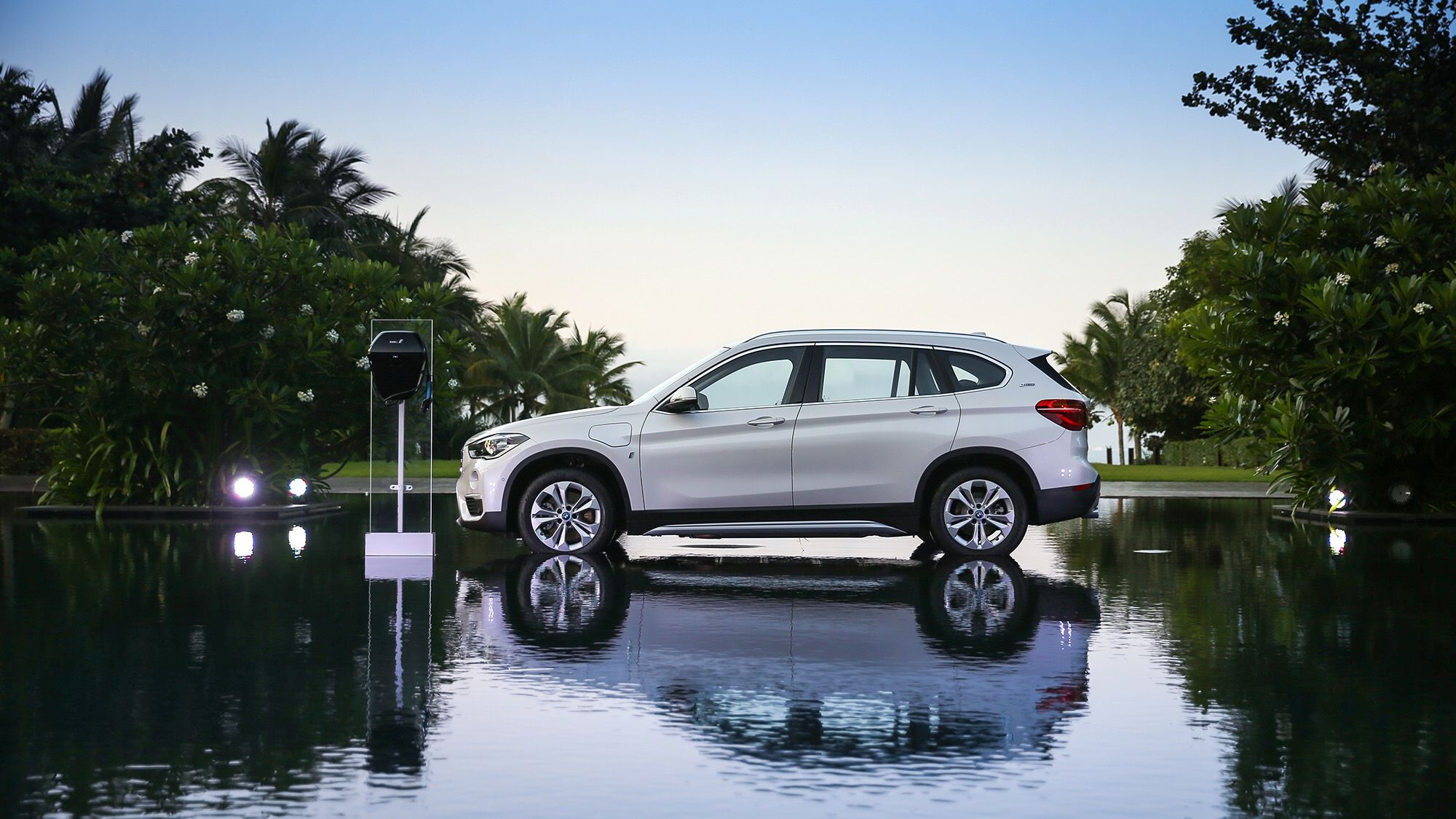Summary of Background
The BMW X1 PHEV (Plug-In Hybrid Electric Vehicle) was launched in 2017, combining the spaciousness of the new X1 and the policy advantages of PHEV, and achieved good sales in license-plate-restricted cities. However, the old model’s range of only 60 km on pure electric power was still somewhat unsatisfactory for daily use, so we welcome today’s protagonist: the upgraded version of the BMW X1 PHEV.
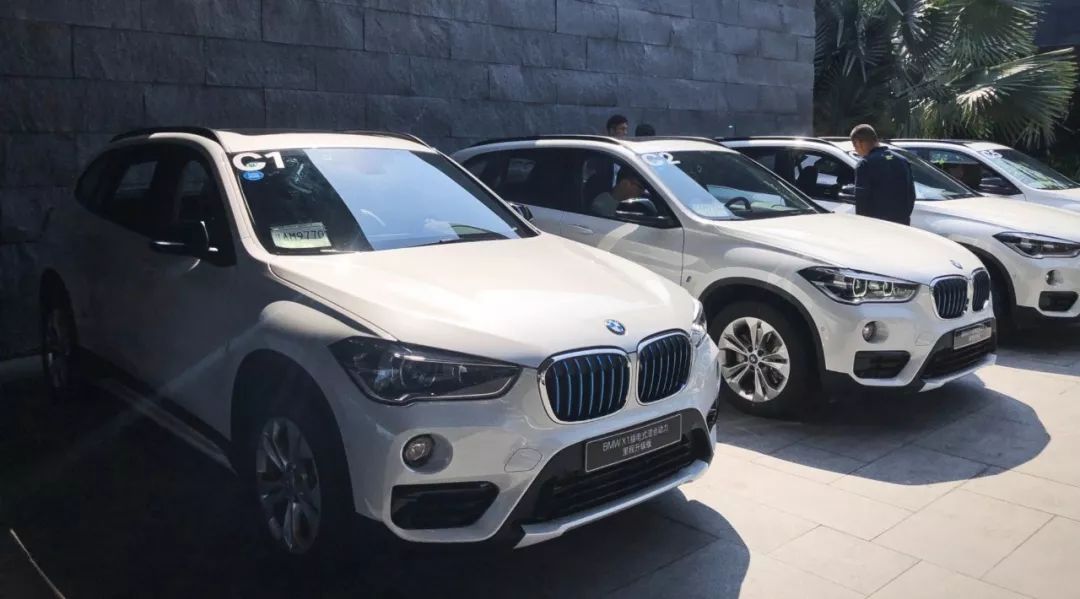
NEDC pure electric range of 110 km, the longest pure electric range of PHEV models worldwide.
Compared to the old model, the new X1 PHEV’s appearance and interior are almost unchanged. Before experiencing the test drive, let’s first talk about the biggest change: the battery.
BMW Brilliance Automotive, CATL (Contemporary Amperex Technology Limited), and 811 Power Battery
The 110 km range is attributed to CATL’s latest 811 power battery, and CATL’s success cannot be separated from BMW Brilliance Automotive’s early support.
As early as 2012, when CATL had not yet established itself in the field of power battery, it was selected by BMW Brilliance Automotive and the two sides conducted in-depth cooperation on the project of the Zinoro electric car. Even in the early exploration stage of power battery, BMW Brilliance Automotive also gathered outstanding talents in electric vehicles and batteries to form a special expert team to assist CATL in joint development.
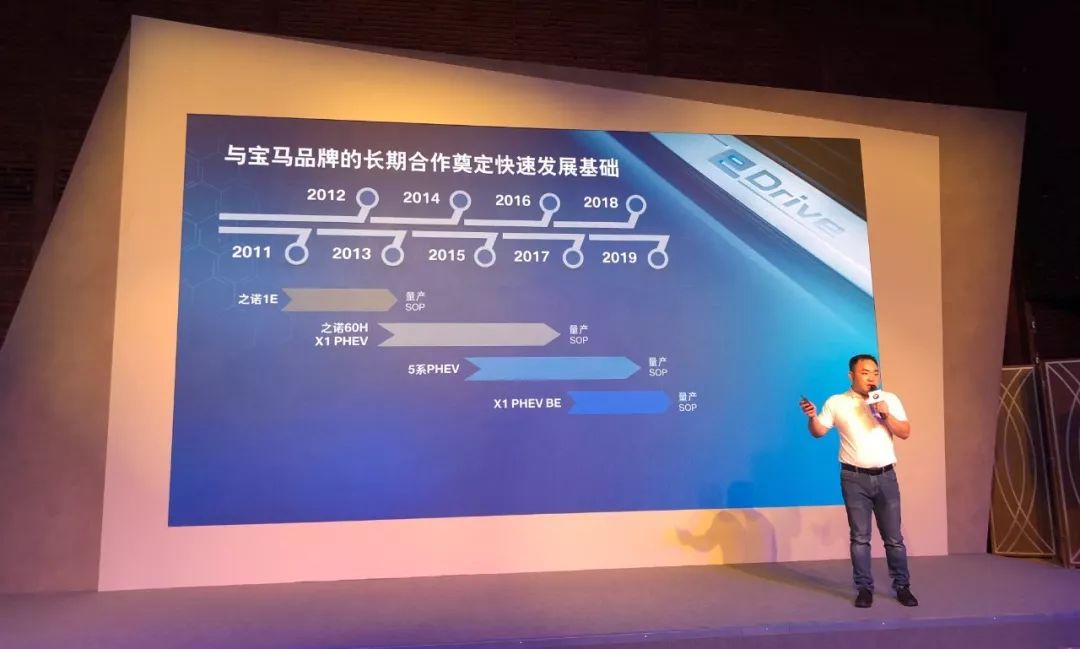
Today, CATL has become a leading enterprise in the power battery industry, establishing battery factories in Germany and supplying products to the world. Its output has been the highest in the world for two consecutive years, surpassing Panasonic.
CATL’s latest product, the NCM 811 power battery, is also the world’s first high-energy-density power battery with the positive electrode materials nickel (Ni), cobalt (Co), and manganese (Mn) in a ratio of 8:1:1.
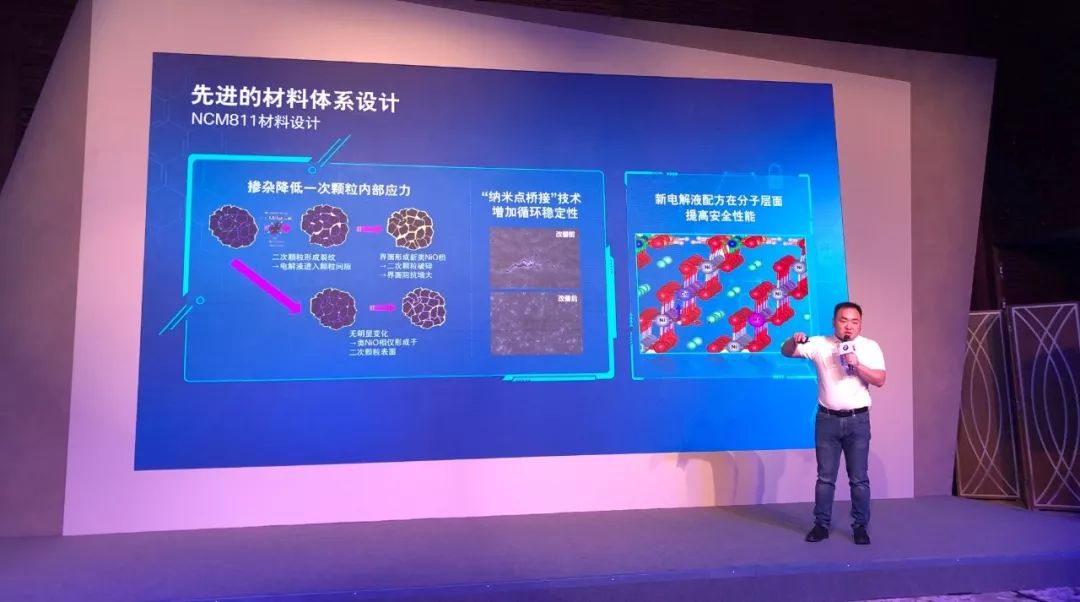
On Weibo, someone once compared CATL’s new battery supply to electric vehicle manufacturers to Qualcomm’s new Snapdragon chips supply to smartphone manufacturers. This analogy is not an exaggeration. This year, all domestic automakers that released pure electric vehicles with NEDC ranges above 500 km, except for Tesla and BYD, which have battery production capabilities, are equipped with CATL’s 811 power battery.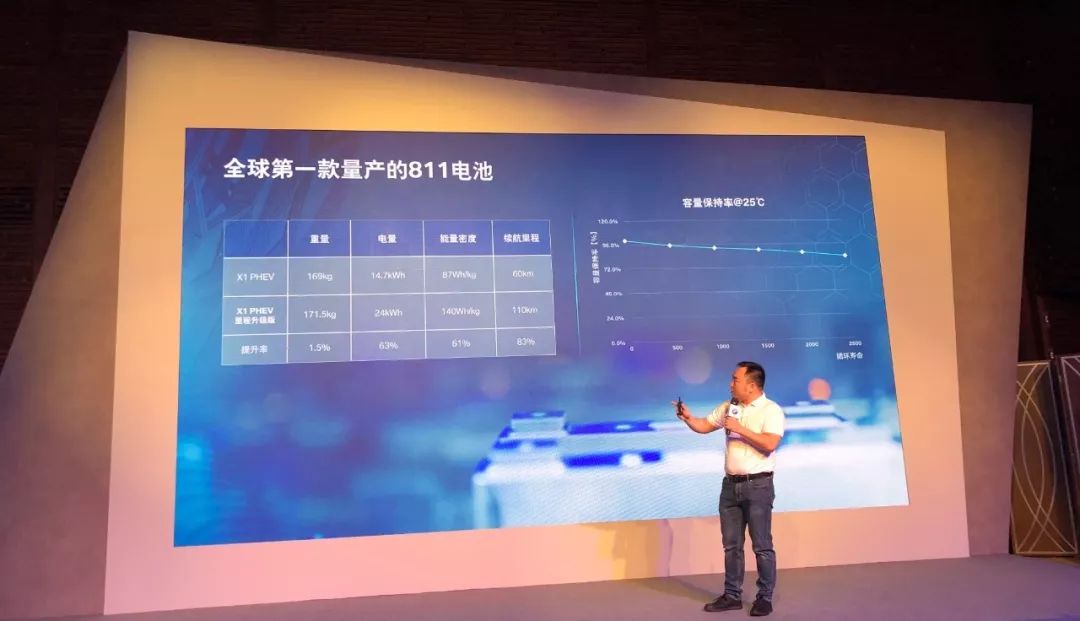
Considering the above, it is not surprising that the first batch of 811 batteries from Ningde will have the highest priority for supplying BMW. Based on this, we can speculate that the upcoming BMW iX3, the new generation of pure electric vehicle that will be mass-produced at the Shenyang Tiexi factory next year, will use the latest and most mature battery products from Ningde with higher priority supply.
After introducing the history and outlook, let’s take a look at the battery pack on the X1 PHEV.
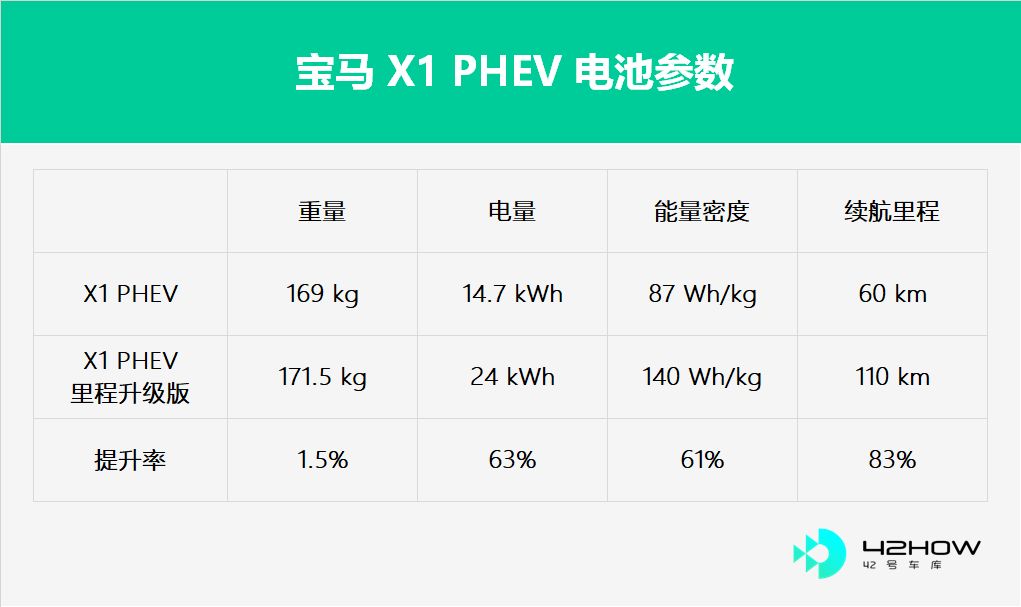
First, let’s take a look at the evolution of the new battery pack depicted in the above figure. With a 63% increase in energy while only increasing the battery weight by 1.5%, the Pack energy density composed of 811 battery units has reached 140 Wh/kg.
Zheng Jun, the BMW project manager at Ningde Times, told us that the tested battery cycle life has reached more than 2500 times, which means that even if the X1 is always driven purely electrically, the battery life can be maintained at more than 275,000 km.
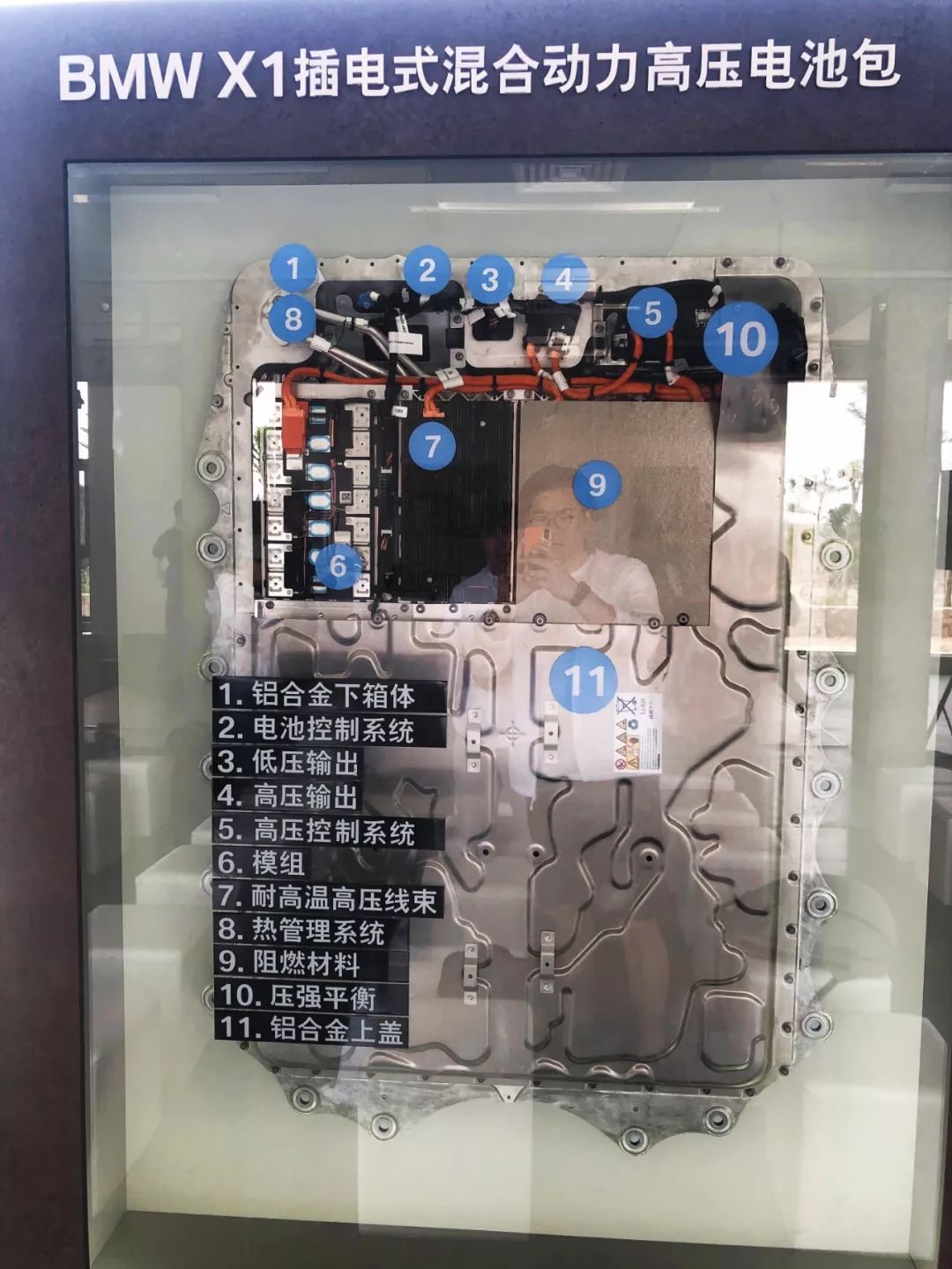
The battery pack of the X1 is very regular, as with pure electric vehicles, and the battery is laid flat on the chassis.
Zheng Jun listed some safety tests that Ningde Times conducted before battery assembly during the workshop, including drop, immersion, vibration, compression, and fire. Most of the test environments are much stricter than real driving environments, and these are just some of the tests. In total, the battery pack has been tested by a total of 273 tests, including 100 performance tests, 48 safety tests, and 125 reliability tests.
The dismantling diagram of the battery seen on the scene shows that the upper and lower cases are made of high-strength and lightweight aluminum alloy material. The liquid-cooling structure can better control the temperature of the battery pack in winter and summer seasons, and specialized flame-retardant materials ensure that the entire battery system will not ignite externally within 5 minutes of thermal runaway.
For Safety
Safety is an important premise for most people to accept an electric vehicle, and the thermal runaway of a battery pack is highly correlated with the heat management system design capacity of automakers.
PHEV models do not rely too much on pure electric performance, and BMW has done everything right in the thermal management of X1 PHEV.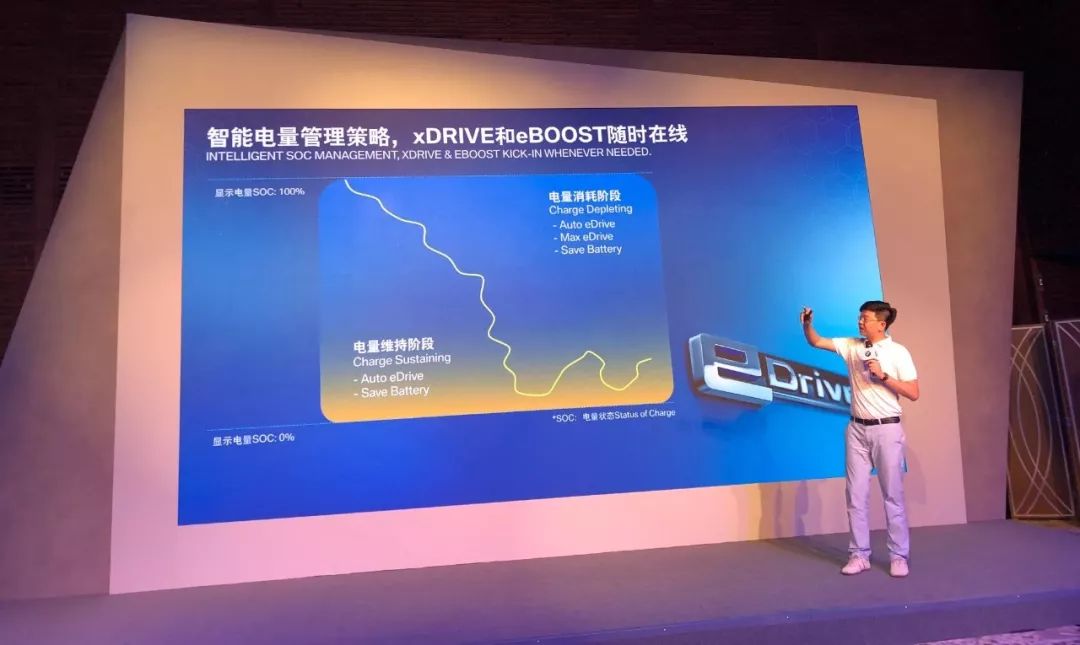
Using Battery Lock as a Control for Overcharging and Overdischarging: X1’s battery capacity is 24 kWh, but the actual usable capacity is limited to 18.5 kWh, with a battery lock of up to 23%, far exceeding the battery lock ratio of any pure electric vehicle on the market. This means that you cannot overcharge or overdischarge the battery during daily charging and power use. In any driving mode, when the battery level drops below the threshold of 3%-4%, the entire hybrid system will begin to limit the output of the battery and rely more on the engine for driving, while continuously utilizing regenerative braking to charge the battery.
No Fast Charging: Low-frequency fast charging is a protection measure for the battery. However, the lack of fast charging is a pain point for PHEV models, especially high-capacity hybrid models like the X1 PHEV. The official slow charging data is 0-100%: 7 hours, 0-80%: 5.5 hours.
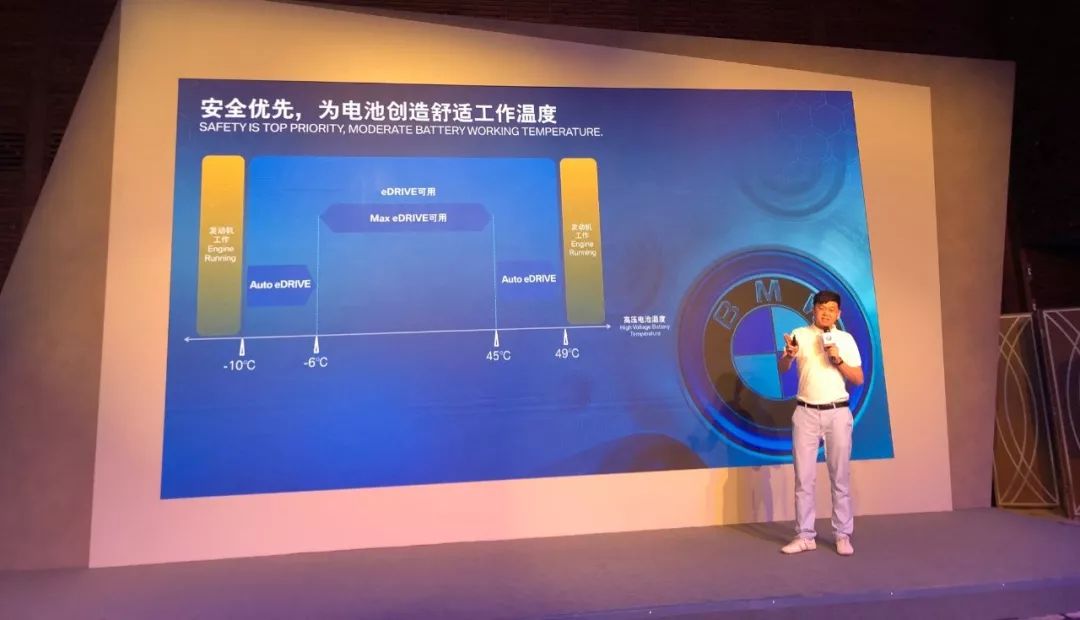
Battery Overheating Protection: PHEV models can avoid the battery operating at its limit temperature by the timely intervention of the engine. Therefore, BMW limits the working temperature of the battery under the eDRIVE mode. When the battery drops below -10℃ or exceeds 49℃, the engine will ignore the driving mode and directly enter the driving mode.
Test Results of MAX eDRIVE, AUTO eDRIVE, and SAVE battery Energy Efficiency
During a one-day road test event held by BMW from Sanya to Haikou, we tested the energy efficiency of three hybrid modes in three separate stages.

Let’s briefly introduce the three hybrid modes:
-
MAX eDRIVE: This is the pure electric mode. When the vehicle’s speed is below 120 km/h, the engine does not work. When the vehicle speed is above 120 km/h or when the accelerator pedal is pressed hard (kickdown), the engine will forcefully intervene and work.
-
Auto eDRIVE: Intelligent hybrid mode. Both the electric motor and engine operate in the most efficient range. When the vehicle’s speed is below 90 km/h, it will remain in pure electric mode unless the accelerator pedal is pressed hard. When the vehicle’s speed is over 90 km/h, the engine will turn on and become the primary driving force.* SAVE battery: Minimize the operation of the electric motor as much as possible. At this time, the engine serves as the main driving force throughout the journey, and the electric motor only intervenes when the vehicle needs high torque at the moment of starting. At this stage, the energy recovery of kinetic and potential energy is achieved through the BSG motor on the front axle, and the battery capacity continues to increase during the journey.
All of the above modes will force the engine to intervene when the battery level is too low or when the battery is too cold or hot.
In addition, there are three driving modes of BMW: Sport, Comfort, and Eco. In Sport mode, the engine will intervene more frequently when driving.
Let’s talk about the performance of the three hybrid modes in practical tests:
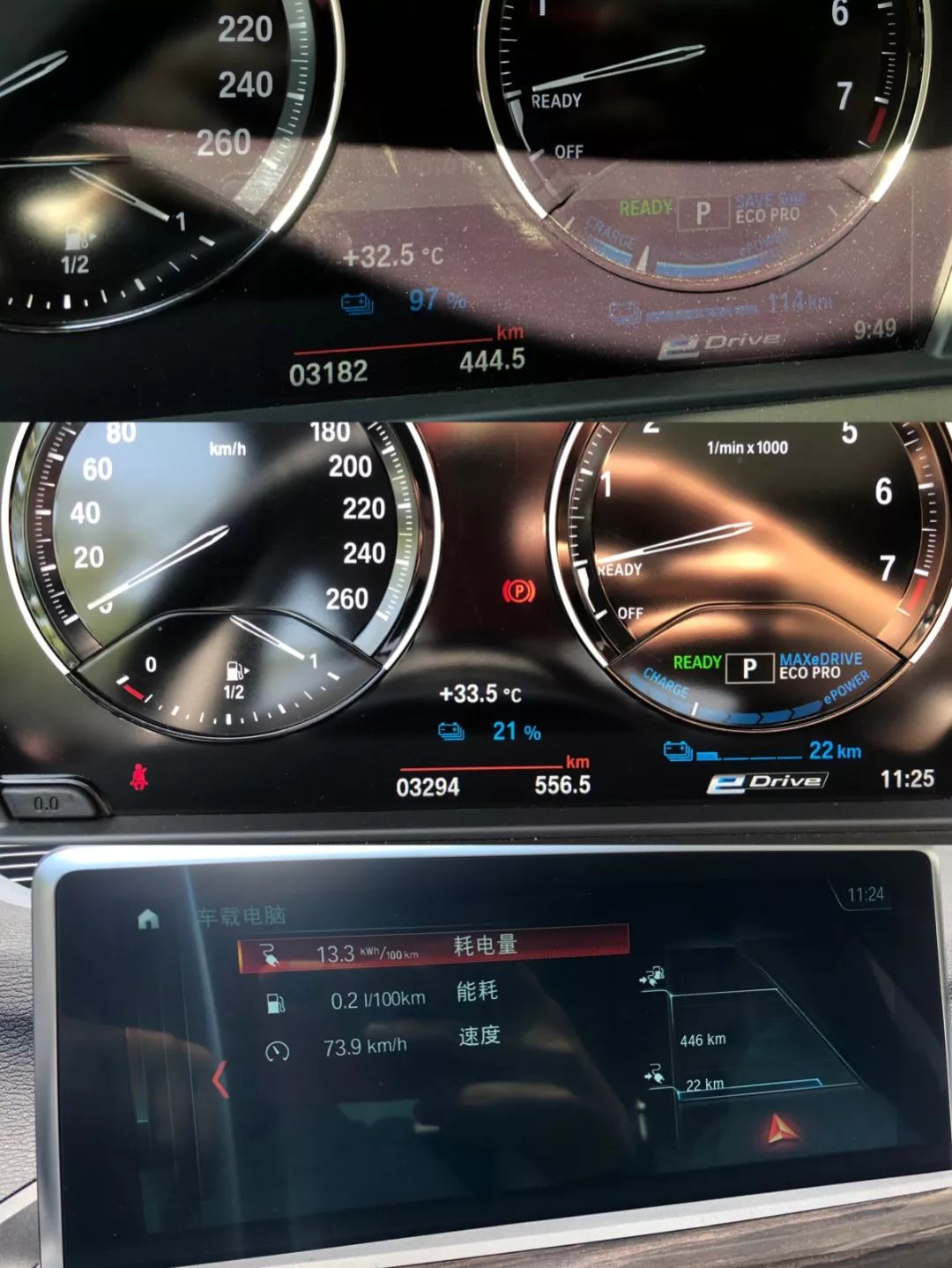
MAX Edrive: In the morning, with the battery fully charged, I set off in pure electric mode, and the display showed 114 km. The air conditioning was on during the entire journey, with two adult males in the car. The total distance traveled was 114 km. Surprisingly, the displayed remaining range was still 22 km. The average energy consumption for the whole journey was 13.3 kWh/100 km, which is a very good energy consumption level for a 1.9-ton SUV. But it should be noted that the road conditions were also in an ideal state. There was a downhill section of about 6 km at the beginning, and the vehicle consumed very little energy. During the later stage, the speed was mainly maintained at 70-90 km/h, with an average speed for the whole journey of 73.9 km/h.
In pure electric mode, the entire vehicle is driven by the 70 kW rear motor only, which has good energy consumption performance but poor performance performance. When a high-power demand is required by deep pressing the accelerator, the engine will intervene.
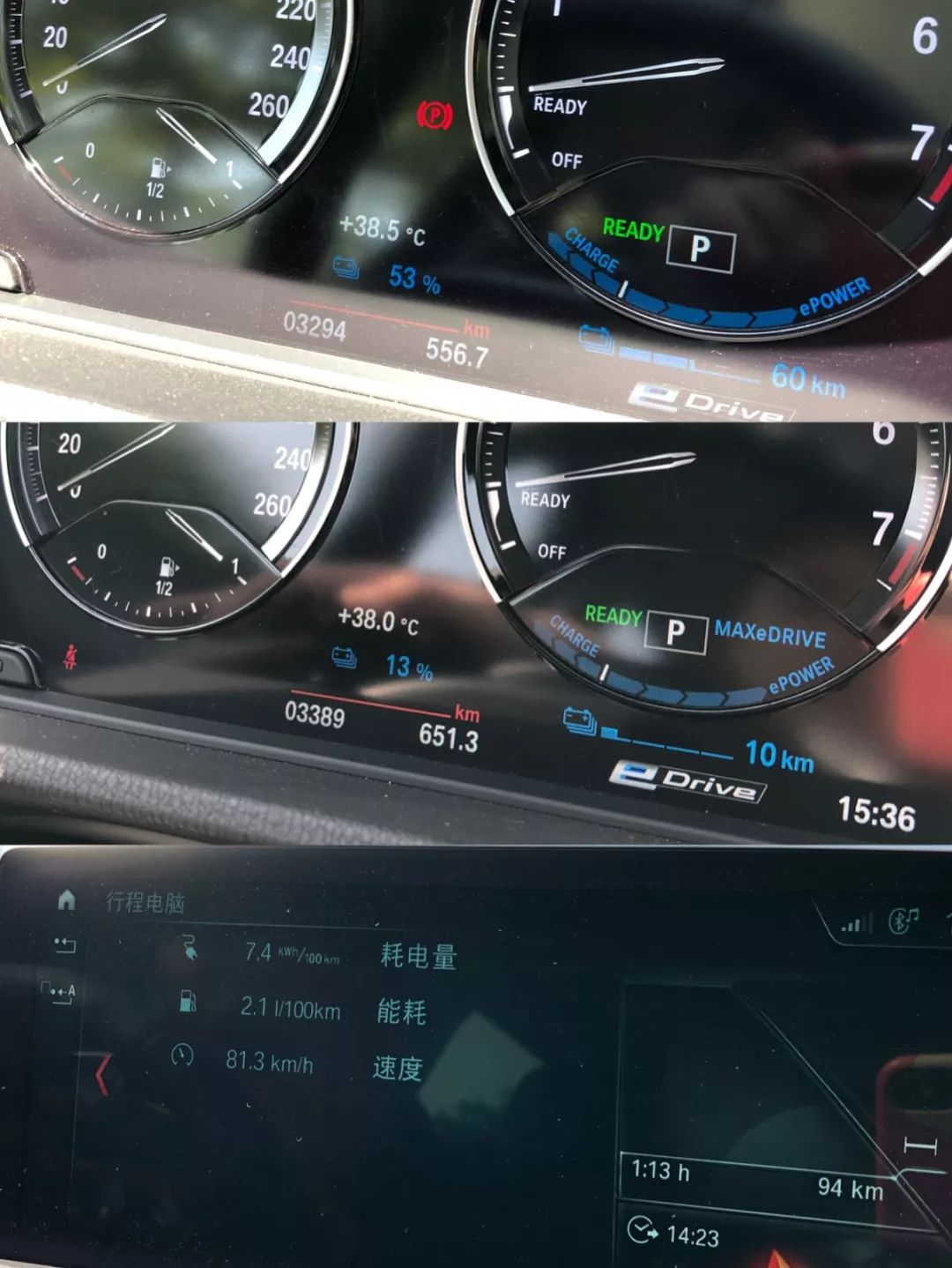
Auto Edrive: This mode should be commonly used by most drivers in daily driving. At noon, our car’s battery level was charged to 54%, displaying 60 km. The afternoon journey was mainly at speeds of 80-100 km/h. Consistent with what was mentioned in the previous mode, the electric motor mainly drives the vehicle when the speed is below 90 km/h. The total distance traveled was 94.6 km, with an average speed of 81.6 km/h. When we arrived at the destination, the battery level was still 13% with the display showing 10 km. The fuel tank was still almost full. The overall energy consumption was 7.4 kWh/100 km for electricity and 2.1 L/100 km for fuel.However, if you continue driving, the battery will quickly reach the threshold of 4%, and the frequency of the electric motor will decrease while the engine will become the main drivetrain. Fuel consumption will begin to rise, resulting in a driving status similar to what I am going to discuss below, which is called the SAVE Battery mode.
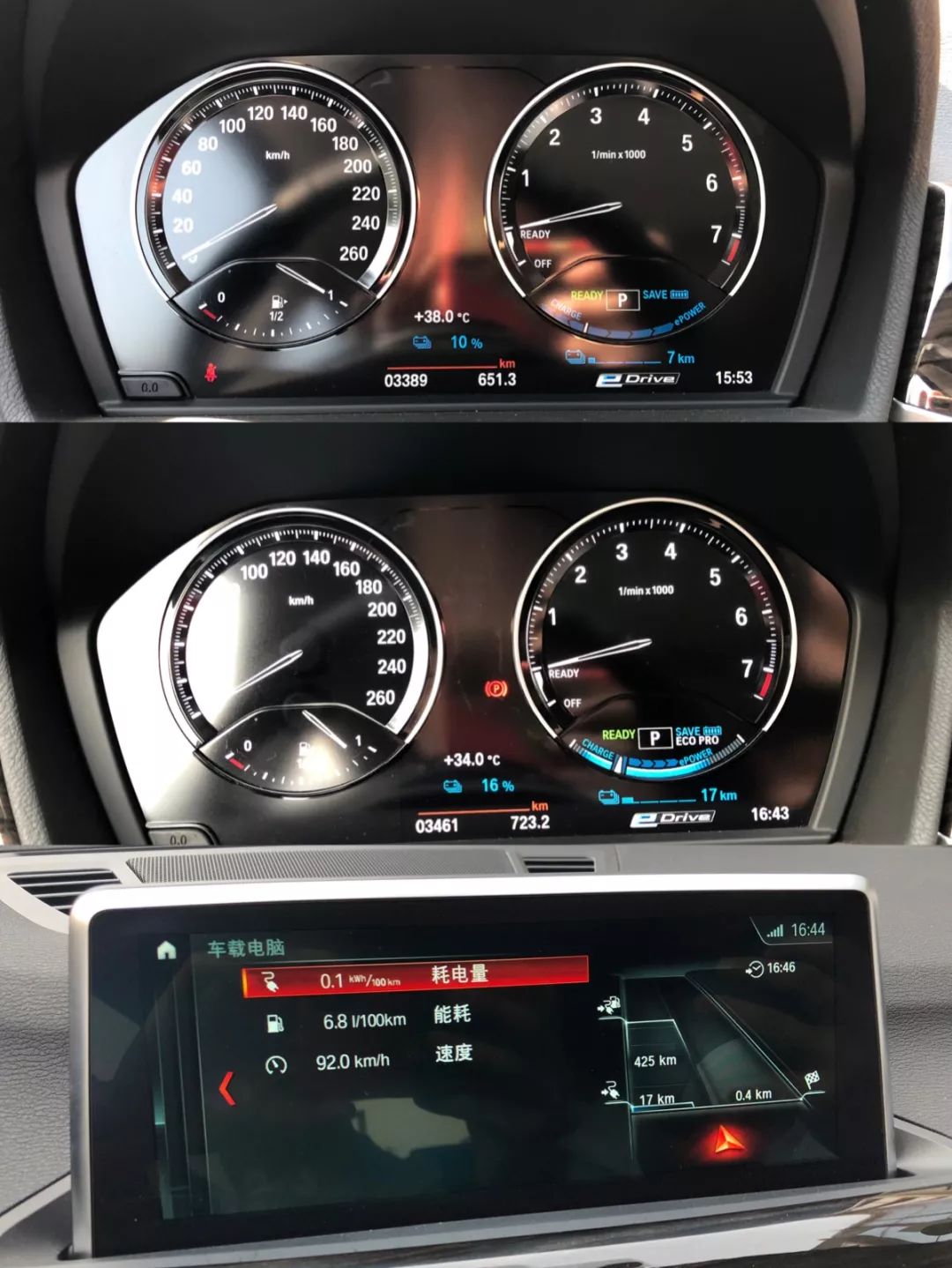
SAVE Battery mode: If you don’t want the vehicle to continue draining the battery, you can adjust it to this mode. The electric motor will operate at an extremely low frequency and recharge the battery through energy recovery. In this mode, I drove a total of 71.9km at an average speed of 92.1km/h on highways and some urban roads with a speed limit of 90-120km/h. The battery level increased from 10% at the start to 16%, and the display showed 7 km when it actually traveled 17km. Throughout the journey, the electric motor only intervened at the start of the vehicle, so the overall electric consumption was only 0.1 kWh/100 km, while the fuel consumption was 6.8 L/100 km.
This data basically shows the energy consumption performance of the X1 PHEV in fuel mode at extremely low battery levels. The energy supplemented to the battery pack is mainly obtained through energy recovery during driving. Although the energy supplement speed is slow, the energy utilization efficiency is relatively high.
Driving and Riding Experience during the 280.5 km above
Before talking about this as a new energy vehicle with a plug-in hybrid architecture, first, it is a BMW. The X1 PHEV is labeled as X1 xDrive25Le, where xDrive represents the four-wheel drive in BMW’s family lineage, and 25 is the highest nominal power in the X1 series.
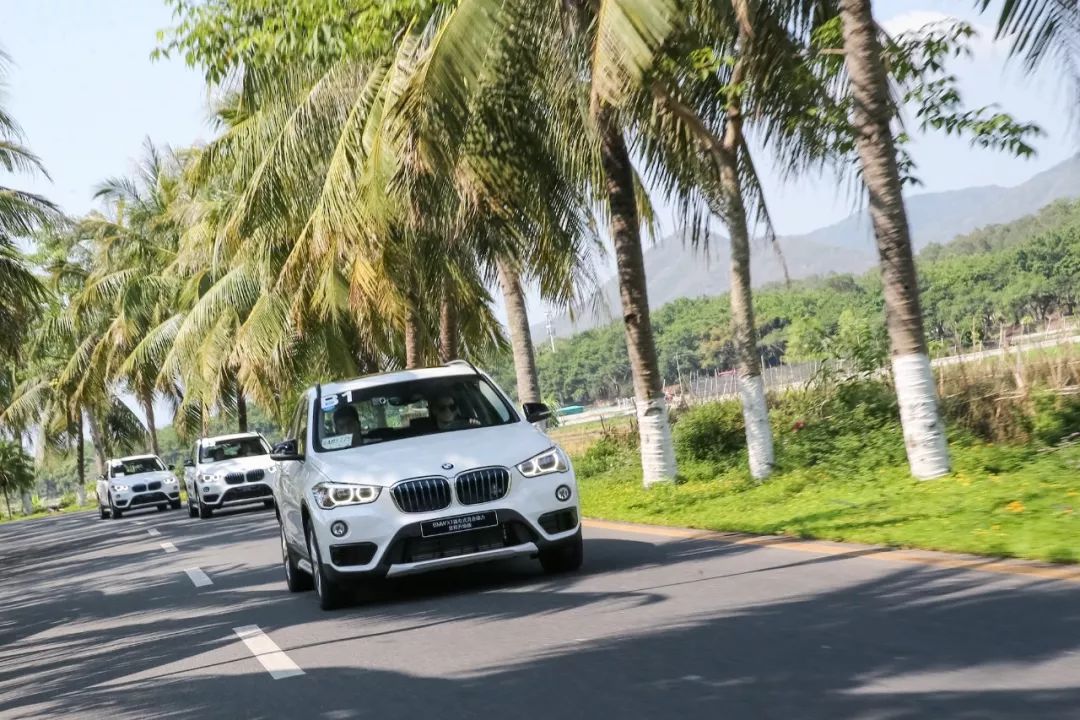
At the front of the X1 PHEV, there is a 1.5T B38 engine with a power output of 100 kW/220 N·m, and at the rear, there is a permanent magnet motor with a power output of 70 kW/165N·m. In daily driving conditions, if you consider fuel efficiency, select the driving mode in Auto eDRIVE + Comfort/Eco, and the vehicle will intelligently allocate power to the front and rear axles, allowing the engine and motor to switch seamlessly in their respective most efficient zones.
Here, “seamless switching” must be used because almost no instant intervention of the engine can be felt during the driving or riding process, unless one looks at the energy transmission diagram on the vehicle’s large screen.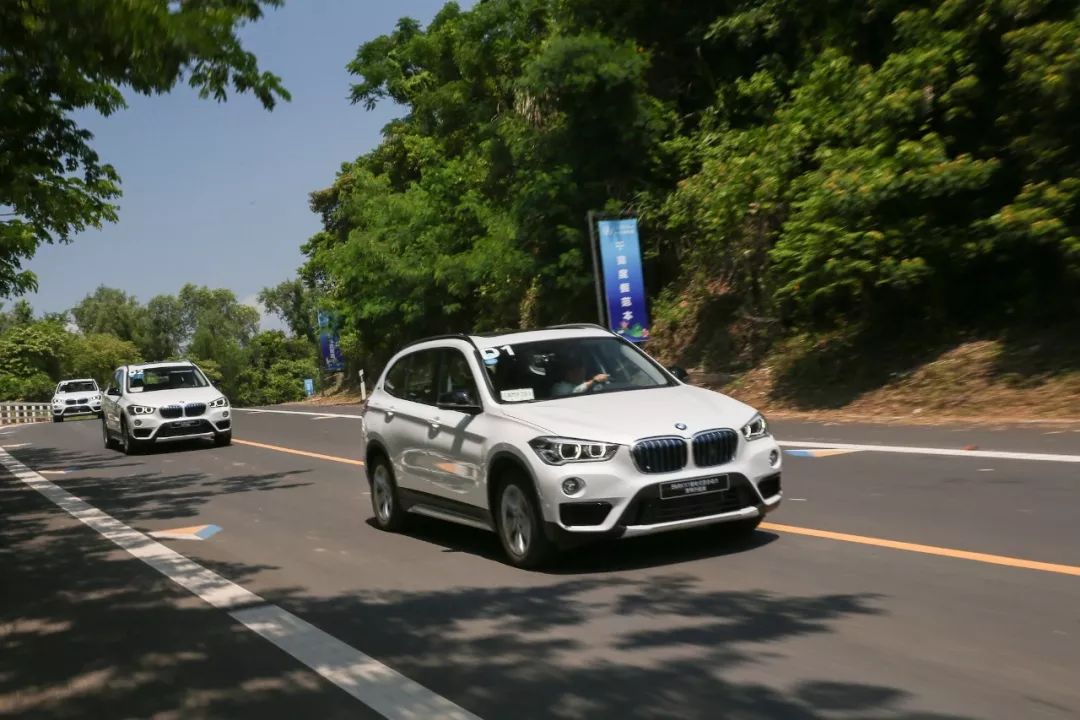
BMW aims to achieve linear acceleration on PHEV models, just as it did on traditional fuel-powered vehicles. When it comes to power output of the front and back axles, which separate the engine and the electric motor, it should be seen as a whole. The four-wheel drive system created by the electric motor in the rear axle is much more sensitive in the process of power output than the traditional driving axle, making a significant difference during the driving process.
If driving performance is the goal, then Auto eDRIVE + Sport is the best mode. Depending on the depth of the accelerator pedal, the system gets the engine of the front axle into driving to a greater extent in addition to the motor works in the rear axle, until it hits “kickdown”, providing the full power of 170 kW to all wheels. It must be noted that the 6AT transmission logic of the X1 PHEV is adjusted again based on the moment and power of the electric motor intervention to make up for the delay in gear shifting.
Regarding the setting of the chassis and steering feel, BMW is a near-mythical presence, but what I want to say is that this is not applicable to everyone.
Regardless of the driving mode, the chassis of the X1 PHEV always stays relatively firm and so does the seats. So when the vehicle passes through continuous road bumps, passengers will still feel obvious shaking. The sophistication of chassis tuning lies in the fact that the X1 PHEV handles every bump very crisply, and there is no extra shaking inside the vehicle. The filtered vibration is conveyed to the driver with a clear road sense and crisp damping sound, which is full of a sense of luxury.
The steering has only a small amount of play, and the amount of rotation of the steering column transmitted to the wheels is very linear. After driving this car for 10 minutes, I was able to feel the precise “driving as one” immediately. But to be honest, because the steering is so precise, it requires the driver to be more focused and ultimately more fatigued during high-speed driving. Moreover, the heavy feel of the steering wheel is not very friendly to female drivers.
On the morning of the second day of the road test, we experienced a test of the xDrive four-wheel-drive system for the X1 PHEV.
For an urban-oriented SUV, we must first understand that the significance of a four-wheel-drive powertrain is mostly reflected in getting out of trouble on icy and snowy roads and assisting handling during cornering on roads, so it is not very meaningful to discuss off-road performance too much.
 As the only four-wheel drive vehicle with a hybrid structure under the UKL platform, X1 shares the same design goal as mature xDrive in the logic of 4WD function realization. Based on the power demand for different scenarios and road conditions, the system will automatically allocate torque output to the front and rear axles. For example, when driving on a sandy slope, the rear motor instantly intervenes in power output, and the same happens when turning on a cross-axis road.
As the only four-wheel drive vehicle with a hybrid structure under the UKL platform, X1 shares the same design goal as mature xDrive in the logic of 4WD function realization. Based on the power demand for different scenarios and road conditions, the system will automatically allocate torque output to the front and rear axles. For example, when driving on a sandy slope, the rear motor instantly intervenes in power output, and the same happens when turning on a cross-axis road.
The purpose of this system is to allow vehicles to have the maximum degree of passability with the least concern from drivers. The addition of the rear motor makes the torque distribution of the entire system more responsive.
Who pays the bill?
The BMW X1 plug-in hybrid upgraded version of mileage, positioning the highest and most expensive model in the X1 series, has a high price of 393,800 yuan.
In my opinion, the target user group for this product was quite clear from its definition: family users in first-tier and second-tier cities who pursue luxury brands.
Moreover, this X1 PHEV has upgraded its pure electric mileage to 110 km, further expanding its travel radius in the most economical pure electric mode.
As users with home charging piles can drive in pure electric mode for commuting and suburban trips, they can experience the economic driving cost of less than 10 yuan per 100 kilometers as electric vehicle owners. Even without a home charging pile, the hybrid system has lower energy consumption and higher power output than pure fuel systems. Users can occasionally charge at the office building or shopping mall, serving as a supplement to energy sources other than fuel.
In addition, after X1 PHEV, we are really looking forward to the release of iX3 next year.

- Drive the BMW X5 Professional Driving Assistance System on the Third Ring Road in Beijing | Video * BMW’s Next Generation of Electric Vehicles


This article is a translation by ChatGPT of a Chinese report from 42HOW. If you have any questions about it, please email bd@42how.com.
